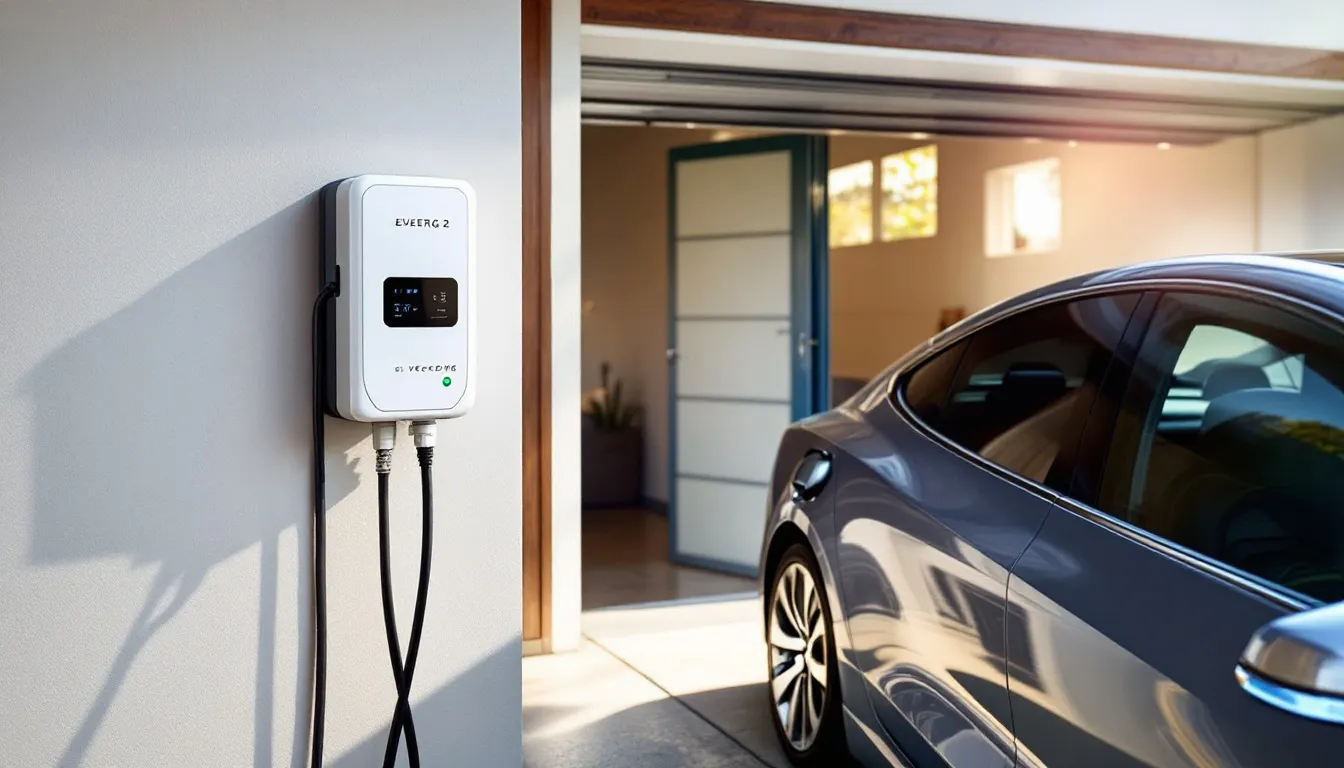Essential Guide to Smart Home Wiring: What You Need to Know
Enhance your home's efficiency with essential smart home wiring tips. Discover practical advice for safe and effective insta
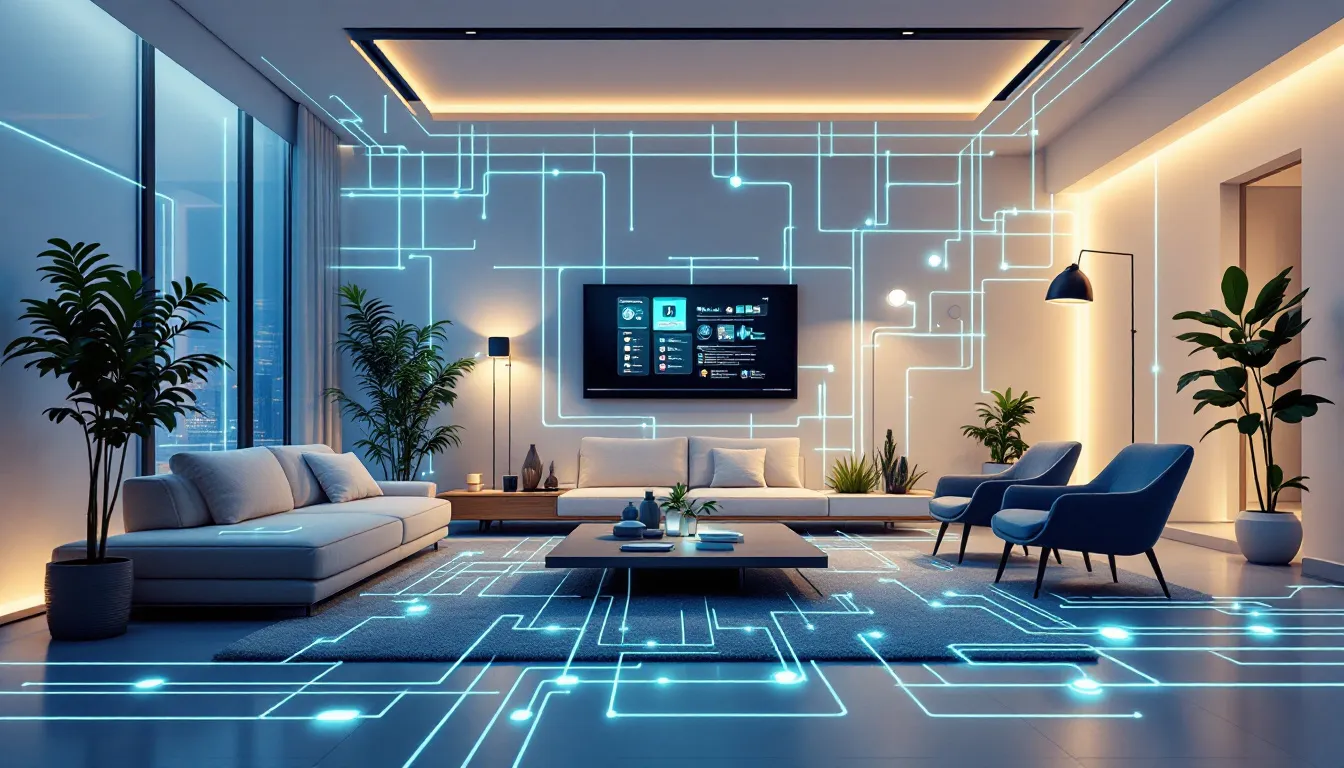
Smart home wiring is critical for a seamless smart home experience. Whether you’re integrating smart lights, thermostats, or security systems, proper wiring ensures everything functions flawlessly. This guide will help you understand smart home wiring basics, key components, and essential planning steps to future-proof your home.
Key Takeaways
- Smart home wiring is crucial for ensuring devices communicate effectively, enhancing convenience and future-proofing your home for new technology.
- Proper planning, including assessing specific needs and considering future upgrades, is essential for an efficient smart home wiring setup.
- Consulting with licensed professionals is key to ensuring safe installations that comply with local codes and meet the specific electrical requirements of smart devices.
Understanding Smart Home Wiring
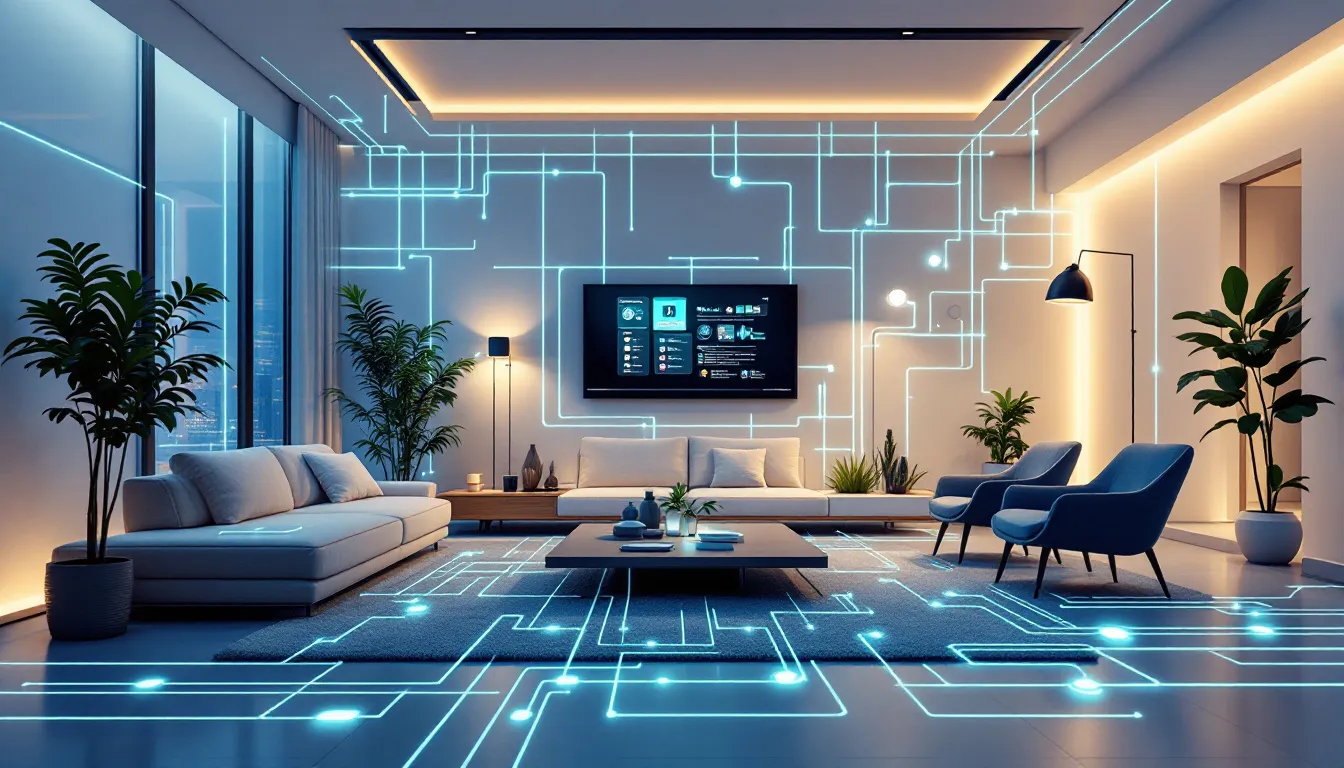
Smart home wiring forms the core infrastructure, allowing various devices to communicate and operate efficiently. Imagine a well-orchestrated symphony where each instrument plays its part harmoniously; that’s what smart wiring does for your home. It ensures that your smart devices—whether they’re smart light switches, thermostats, or security systems—can communicate effectively, providing you with the ultimate convenience, security, and efficiency.
Without proper smart wiring, even the most advanced smart home devices may fall short of their potential, leading to frequent malfunctions and user frustration. The core purpose of smart home wiring is not just to support today’s technology but also to future-proof your home for innovations yet to come.
Investing in smart wiring now keeps your smart house at the forefront of smart home technology, ready to incorporate new devices and systems that make life easier in the house.
Planning Your Smart Home Wiring
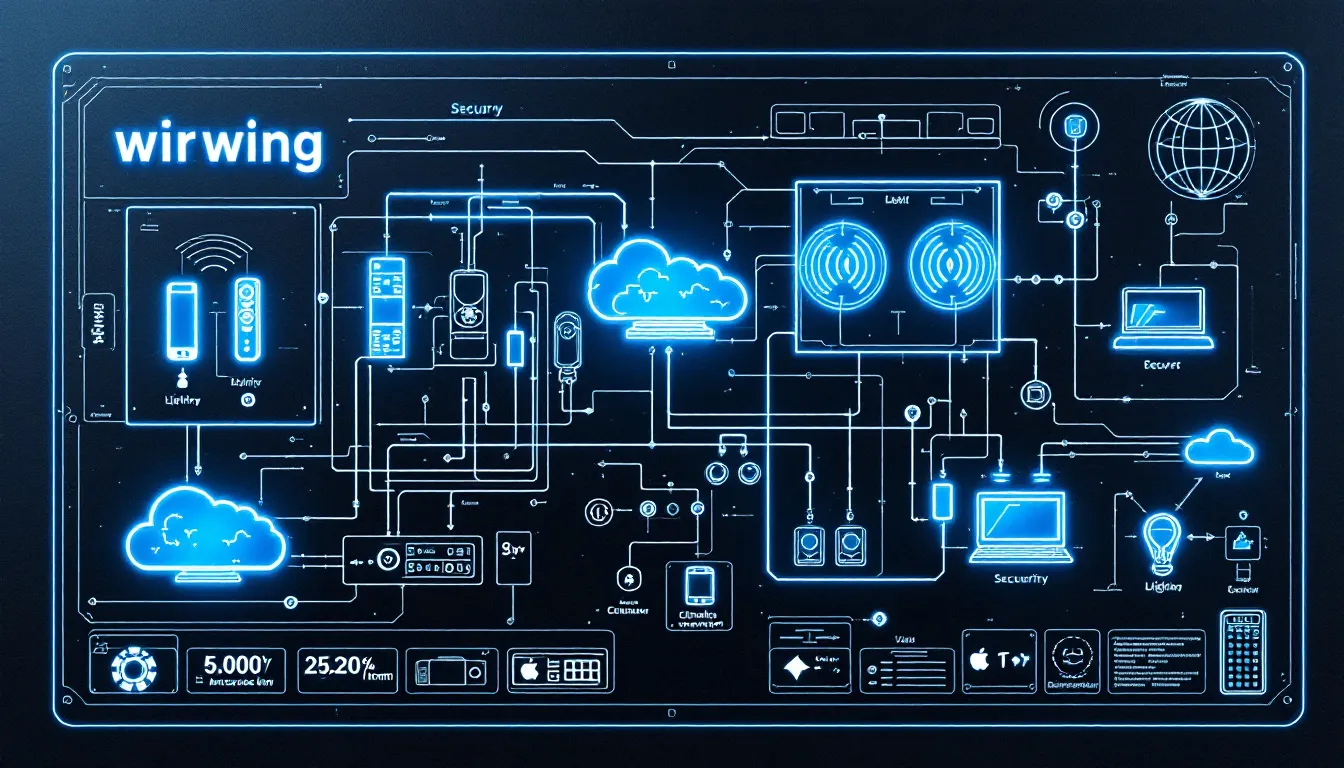
Effective planning is the cornerstone of a successful smart home wiring project. Carefully considering your needs and future requirements can save time and money, avoiding complications. Proper planning ensures seamless integration of smart devices and prepares your home for future technological advancements.
The planning process involves several key steps, including assessing your current needs, implementing future-proofing strategies, and consulting with professionals. Taking these steps allows you to create a comprehensive plan addressing both immediate needs and long-term goals.
Assessing Your Needs
Before diving into the wiring process, it’s crucial to assess your specific needs. Essential smart devices like smart light switches, smart outlets, and video doorbells require different types of wiring to function optimally. For instance, a smart thermostat needs the appropriate wiring to control power to your HVAC system, even if the system itself isn’t smart.
Additionally, consider the protocols like Zigbee and Z-Wave, which can reduce wiring complexity by allowing wireless communication between devices. It’s also important to account for the absence of a neutral wire, especially in homes built before 2000, as this can impact the installation of certain smart devices.
Future-Proofing Strategies
Future-proofing your home involves:
- Planning for technological advancements that may not yet be on the market.
- Including extra wiring during the initial installation to make it easier to adapt to future smart home innovations without significant rework.
- Using upgradeable components to enhance the potential for future device integration, ensuring your home remains at the forefront of smart technology.
Many homeowners overlook the necessity of planning for future upgrades, which can lead to insufficient wiring capacity and significant rework down the line. Considering future technologies and their requirements helps create a robust wiring infrastructure that simplifies life and ensures optimal performance of your smart home systems.
Consulting with Professionals
Consulting with professionals is a critical step in the smart home wiring process. Professionals ensure that installations are up to code and correct from the start, helping you save money and time while enhancing safety. The key costs associated with smart home wiring include:
- Panels
- Wires
- Electrician’s labor
- Permits
- Inspections.
Most people are not equipped to handle the complexities of smart wiring on their own, and hiring a professional can minimize mistakes and ensure code compliance. Professionals can also provide valuable support and guidance, helping you navigate the planning and installation processes to achieve the best possible outcomes.
Key Components of Smart Home Wiring
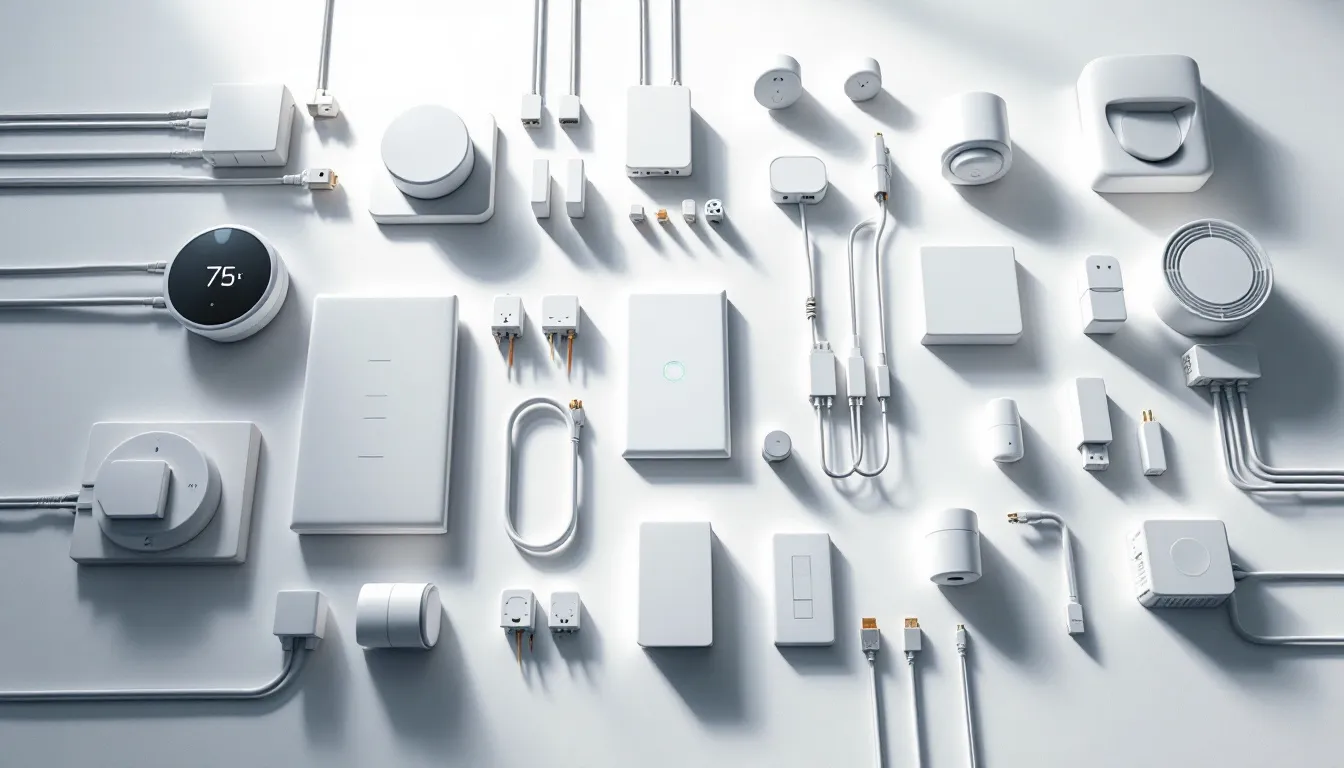
Understanding the key components of smart home wiring is essential for creating an efficient and effective system. Smart homes require proper wiring for various connected devices, such as smart refrigerators and air conditioners, to function effectively. Essential connections include those for internet, television, and security systems, which interlink various devices to create a cohesive smart home environment.
For optimal networking, using high-performance cables like Cat6, fiber-optic cables, or ethernet cabling is recommended to support high-speed internet connections. Even though many smart devices are wireless, hardwired connections are essential for power and reliable broadband signals. This ensures that all smart devices function well and that the smart home hub can automate processes and enhance efficiency by connecting various systems through a single platform to connect them all.
Structured Wiring Systems
Structured wiring systems are the backbone of seamless communication in smart homes. These systems manage communication and data relay, ensuring that all smart devices are integrated efficiently. Structured wiring systems utilize high-performance cables organized in a central panel, facilitating communication across devices and enhancing the overall functionality of smart home systems.
The benefits of structured wiring systems include speed, security, and convenience, making it easier to control various smart home devices remotely. This organization also supports energy efficiency, as it allows for better management of electrical connections and power distribution.
Power Supply Considerations
Power supply considerations are crucial for ensuring the consistent operation of smart devices. Key points include:
- Hardwired power sources are recommended over batteries to avoid the inconvenience of frequent changes and ensure stable performance.
- Dedicated wiring for power provides a cleaner installation and safer operation.
- Using dedicated wiring reduces the risk of electrical issues.
Power supply wiring is essential for outdoor smart devices as well, as hardwired connections are less prone to interference and provide a stable connection. This ensures that smart devices operate consistently and reliably, enhancing the overall efficiency of your smart home.
Ethernet Networks vs Wi-Fi
When it comes to smart home networks, Ethernet connections offer several advantages over Wi-Fi:
- Greater reliability
- Faster and more stable internet access, crucial for areas with high device usage
- Faster data transfer rates, ideal for smart home devices that require stable and high-speed internet
Power over Ethernet (PoE) technology is particularly useful for devices like security cameras, as it supplies both power and data through Ethernet cables. While Wi-Fi is convenient for wireless devices, having wired Ethernet ports in key locations can significantly improve the performance and reliability of your smart home network.
Room-by-Room Wiring Guide

A room-by-room wiring guide is essential for tailoring your smart home wiring setup to the specific needs of different areas. Whether it’s:
- the kitchen
- living room
- bedroom
- bathroom
- outdoor spaces Each area has unique requirements that influence the smart home wiring setup.
Proper planning and installation in each room ensure that your smart home devices are installed to function optimally and provide the convenience and efficiency you desire.
Kitchen and Living Room Setup
The kitchen and living room are central hubs for smart home activity. In the kitchen, optimal connectivity with various appliances can be achieved using Cat6 wire, ensuring high-speed internet and reliable communication. LED bulbs are recommended for use with smart light switches in kitchen lighting setups, providing energy efficiency and customizable lighting options.
In the living room, wiring TV locations with Cat6 cable supports high-speed internet and streaming, enhancing your audio entertainment experience. Special considerations, such as addressing complications in implementing 3-way switches, should be taken into account when planning the wiring layout to ensure seamless operation of all devices.
Bedroom and Bathroom Setup
Smart lighting in bedrooms allows for customizable ambience, enabling you to adjust brightness and color settings through remote control or automation. This enhances convenience and creates a personalized environment that can improve your overall quality of life. Additionally, smart lights controls and light fixtures that can be controlled remotely can be integrated with other smart home systems for a cohesive lighting control experience.
When it comes to bathroom installations, specific considerations such as moisture resistance and appropriate wiring for smart devices are essential. Proper planning and installation can ensure that your smart home devices function reliably in the bathroom environment, providing both convenience and safety.
Outdoor Smart Device Wiring
Outdoor smart devices, such as security cameras and lighting, require reliable wiring methods for optimal performance. Power over Ethernet (PoE) using Cat5 or Cat6 cabling is recommended for outdoor security cameras because:
- It provides both power and data through a single connection.
- It ensures a stable and reliable connection.
- It minimizes maintenance.
- It enhances functionality in various environmental conditions.
Hardwired outdoor devices are generally more reliable and quicker responding compared to wireless ones. Proper wiring for outdoor smart devices enhances their durability and reliability, ensuring that they function effectively and provide the security and convenience you need for your smart home.
Common Mistakes in Smart Home Wiring

Understanding common mistakes in smart home wiring is crucial to avoid potential issues and ensure effective implementation. Homeowners often ignore local code requirements, choose the wrong wire gauge, and overload circuits, leading to technical issues and safety hazards.
Familiarizing yourself with proper wiring techniques and adhering to local codes can help you avoid these pitfalls and ensure your smart home devices operate efficiently and safely.
Choosing the Wrong Wire Gauge
Selecting the correct wire gauge is essential for safe and efficient smart home wiring. Using an improper wire gauge can lead to overheating and potential fire hazards, as the wire may not be able to carry the required current safely. This is a significant risk that can compromise the safety of your home and its occupants, especially if you need to run wires for additional devices.
Choosing the right wire gauge ensures that your electrical connections are safe and reliable, preventing overheating and reducing the risk of electrical fires. Proper planning and consultation with professionals can help you select the appropriate wire gauge for your smart home wiring needs.
Overloading Circuits
Overloading circuits is a common mistake that can have serious consequences. Exceeding the capacity of a circuit can cause it to overheat, leading to potential fires and damaging connected devices. This is particularly important for outdoor lighting, where installing dedicated circuits can manage power loads effectively and improve safety.
Properly distributing the electrical load across multiple circuits ensures that your smart home devices operate safely and efficiently. This approach minimizes the risk of circuit failures and enhances the overall reliability of your smart home wiring.
Ignoring Local Code Requirements
Adhering to local building codes is crucial for the safety and legality of smart home wiring projects. Ignoring local codes can lead to significant safety hazards, including electrical fires and system malfunctions. It can also result in legal issues, such as fines and invalidation of home insurance.
Consulting professionals and understanding local building codes is essential for safe and effective smart home wiring construction. Ensuring that your installations comply with local codes not only enhances safety but also provides peace of mind and protects your investment.
The Role of Professional Electricians
The role of professional electricians in smart home wiring cannot be overstated. Licensed electricians have the training and knowledge to ensure that all electrical wiring work meets current safety codes and regulations, preventing potential safety hazards. Faulty electrical installations can lead to residential fires, with approximately 51,000 incidents occurring annually in the U.S.
Hiring licensed electricians enhances the resale value of your home by ensuring that electrical systems are safe and well-maintained. Professional electricians can also help upgrade outdated electrical systems to handle modern power demands, providing ongoing support and advice on energy efficiency and system upgrades.
Smart Home Electrical Requirements
Smart home devices often have specific electrical requirements that must be met for optimal performance. For instance, many smart devices need a neutral wire to function properly within home automation systems. A comprehensive smart home wiring plan should include provisions for both high-speed Ethernet and low voltage wiring connections to ensure all devices can communicate effectively.
Smart outlets, for example, need to be wired into the home’s electrical system to function properly, allowing any device plugged into them to become a smart device. Utilizing Power over Ethernet (PoE) for devices like security cameras and wireless access points ensures reliable operation by providing both power and data through a single cable, optimizing energy usage.
These considerations are essential for creating a robust and reliable secure smart home system that makes sense with smart controllers.
Summary
In conclusion, smart home wiring is the foundation that supports the seamless integration and optimal performance of smart devices. Proper planning, assessing your needs, and consulting with professionals are critical steps to ensure a successful installation. Key components such as structured wiring systems, power supply considerations, and Ethernet networks are essential to creating a reliable and efficient smart home environment.
By avoiding common mistakes and adhering to local code requirements, you can ensure the safety and functionality of your smart home wiring project. Remember, investing in professional help can save you time, money, and potential headaches. Embrace the future of home automation with confidence, knowing that your home is wired for success.
Frequently Asked Questions
Do smart switches work without a neutral wire?
Smart switches usually need a neutral wire to work correctly, so if your home was built before 2000 and doesn't have one, it could be a challenge to install them. It's important to check your wiring before making a purchase!
Can smart homes increase electrical fire risk?
Yes, smart homes can increase electrical fire risk if they aren't properly wired. Ensuring you use the right wire gauge and follow local codes is crucial for keeping your home safe.
What's the total power draw of a smart home?
The total power draw of a smart home really depends on how many devices you have and their types. Just make sure your electrical system can support the load!
Do I need permits for smart home installation?
Yes, you'll likely need permits for smart home installations, so it's a good idea to consult with a professional to make sure you're following local regulations.
How can I future-proof my smart home wiring?
Future-proofing your smart home wiring is all about adding extra wiring and using upgradeable components from the start. This way, you'll make future tech adaptations a breeze!
Don’t wait on a risky electrical problem. A quick call gets you pricing clarity and a scheduled visit. Call +1 (424) 238-3889 now and get a licensed LA electrician on your case.




